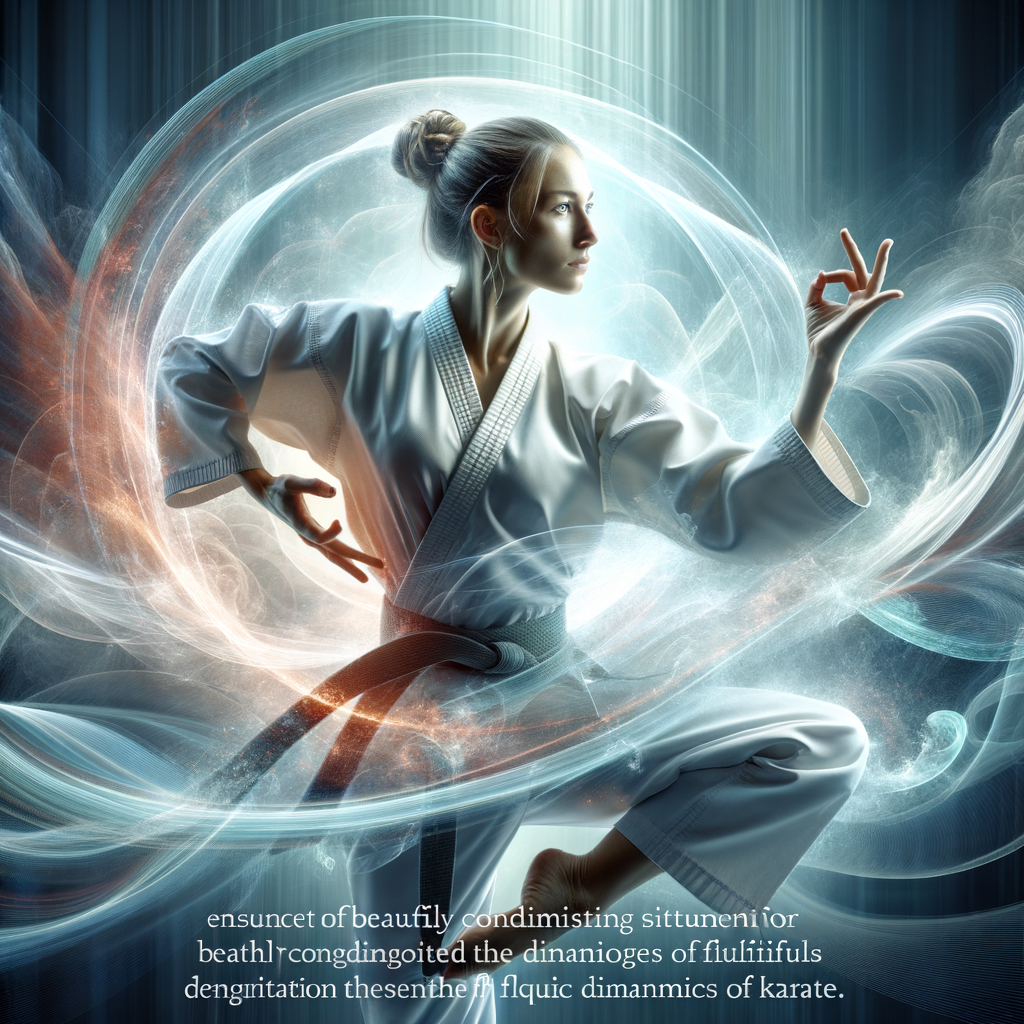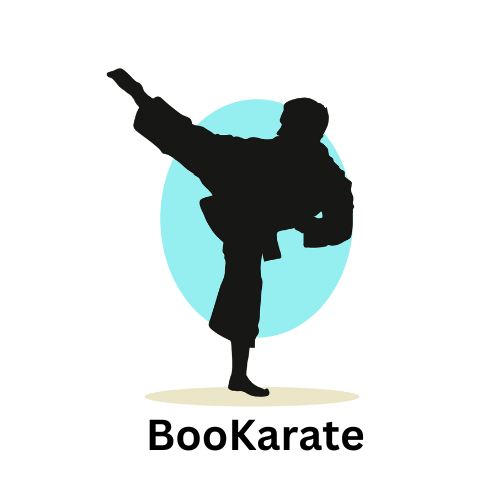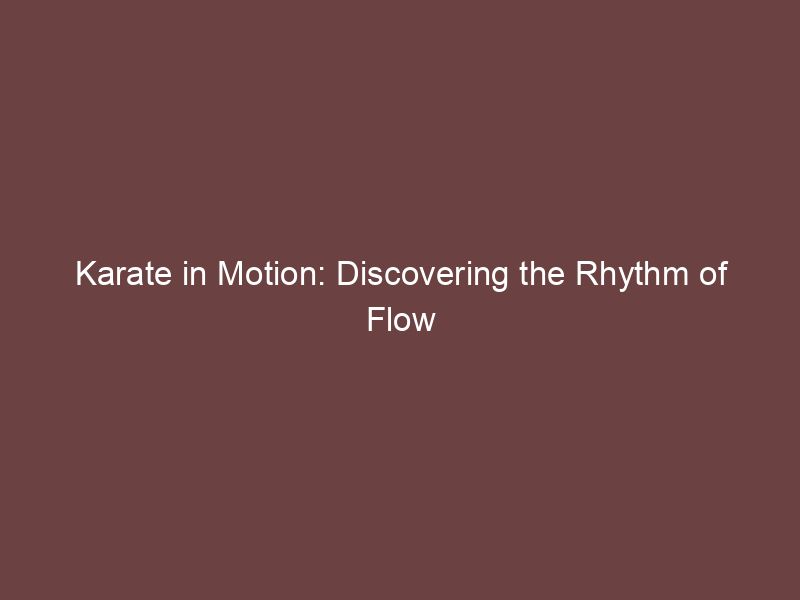
Introduction to Karate Movement Techniques
Welcome to the fascinating world of Karate, a martial art that combines physical strength, mental focus, and spiritual balance. This article will introduce you to the fundamental movement techniques in Karate and the importance of rhythm in martial arts.
-
- Understanding the Basics of Karate Movement
Karate is a martial art that relies heavily on body movements. These movements, known as “techniques,” are the building blocks of Karate. They include punches, kicks, knee strikes, elbow strikes, and open-hand techniques such as knife-hands, spear-hands, and palm-heel strikes.
Each technique requires precise body alignment and coordination. For example, when executing a punch, you must align your shoulder, elbow, and wrist while rotating your hips and transferring your body weight forward. This coordination maximizes the power of your punch while minimizing the risk of injury.
-
- The Importance of Rhythm in Martial Arts
Rhythm plays a vital role in martial arts, including Karate. It’s not just about executing techniques correctly; it’s about doing them with a certain flow and rhythm. This rhythm helps you maintain control, balance, and speed, making your movements more effective and efficient.
Imagine listening to a piece of music. If all the notes were played at the same speed and volume, it would sound monotonous and lack depth. The same principle applies to martial arts. If all your movements are performed at the same speed and power, your Karate will lack dynamism and effectiveness. By varying the rhythm of your techniques, you can create a more powerful and versatile Karate.
Understanding the basics of Karate movement and the importance of rhythm are crucial to mastering this martial art. By practicing these principles, you can develop a strong, fluid, and effective Karate.
Understanding Karate Flow
When it comes to martial arts, particularly Karate, understanding the concept of flow is crucial. Flow refers to the smooth, continuous movement and rhythm that a martial artist exhibits during practice or performance. Let’s delve deeper into this concept.
The Concept of Flow in Martial Arts
Flow in martial arts is not just about the physical movements. It’s a state of mind that allows a martial artist to move with efficiency, precision, and grace. It’s about being in the moment, responding to the situation, and moving without hesitation or unnecessary effort.
- Defining flow in martial arts: Flow is a state where every action, movement, and thought follows seamlessly from the previous one, like water flowing in a river. It’s a balance between control and surrender, between power and flexibility. In martial arts, achieving flow means moving with optimum efficiency, using the least amount of energy for the maximum effect.
- The role of flow in Karate: In Karate, flow plays a vital role. It allows the Karateka (Karate practitioner) to move smoothly from one technique to another, maintaining a rhythm that can be both beautiful and deadly. It’s not just about speed or power; it’s about timing, precision, and the seamless transition between movements. Flow in Karate can be seen in the execution of Kata (formal exercises), Kumite (sparring), and even in basic training exercises.
Understanding and achieving flow in Karate can take years of practice. It’s not just about learning the techniques; it’s about internalizing them, making them a part of your instinctive response. It’s about moving with purpose, with intent, and with a sense of harmony and balance. So, keep practicing, keep flowing!
Finding Rhythm in Karate
Understanding rhythm in karate is a crucial part of mastering this martial art. It’s not just about the physical movements, but also about the rhythm and flow that guide these movements. Let’s delve into how to identify and practice this rhythm in karate.
-
- How to Identify Rhythm in Karate Movements
Identifying rhythm in karate is about observing and understanding the flow of movements. Every karate technique has a specific rhythm, which is a combination of speed, timing, and sequence. Here’s how you can identify it:
-
-
- Observe Experienced Karateka: Watch how experienced practitioners perform their techniques. Notice the pace at which they execute their movements and the pauses between them.
- Listen to the Sounds: The sounds of karate – the shouts, the strikes, the footwork – all contribute to its rhythm. Pay attention to these sounds as they can guide you in understanding the rhythm.
- Feel the Movement: As you practice, try to feel the rhythm in your own body. Notice how your body moves with each technique and how it flows from one movement to the next.
- Practical Exercises for Finding Rhythm in Karate
-
Once you’ve learned to identify rhythm in karate, the next step is to practice it. Here are some exercises that can help:
-
- Kata Practice: Kata is a sequence of karate techniques performed in a specific order. Practicing kata can help you understand and feel the rhythm of karate.
- Metronome Training: Use a metronome to practice your techniques at different speeds. This can help you understand how changing the speed affects the rhythm.
- Partner Drills: Practice your techniques with a partner. This can help you understand how to adjust your rhythm to match your partner’s.
Finding rhythm in karate is not something that happens overnight. It requires patience, practice, and a keen sense of observation. But once you master it, you’ll find that your karate techniques become more fluid, powerful, and effective.
Martial Arts and Flow
The concept of ‘flow’ is integral to the practice of martial arts. It refers to the seamless movement and rhythm that martial artists achieve during their practice. Let’s delve deeper into this fascinating connection.
Exploring the Connection between Martial Arts and Flow
Flow in martial arts is an intriguing concept. It’s about the smooth transition from one move to another, creating a rhythm that enhances the effectiveness of the martial arts techniques. This connection can be traced back to the historical roots of martial arts and is still relevant in modern practices.
-
- Historical perspective on flow in martial arts: The concept of flow has been an integral part of martial arts since its inception. Ancient martial artists believed in the power of fluid movements and the balance of energies. They practiced their techniques with a focus on achieving a state of flow, where their movements would become second nature, allowing them to react instinctively in combat situations. This was not just about physical prowess but also a mental state of being in the moment, fully engaged and focused.
- Modern interpretations of flow in martial arts: In the modern context, the concept of flow in martial arts has evolved, but the core principle remains the same. Today, martial artists use the idea of flow to improve their performance and increase the effectiveness of their techniques. The flow is seen as a state where the martial artist is fully immersed in the action, with each movement flowing seamlessly into the next. This not only enhances the aesthetic appeal of the martial art but also increases its effectiveness in real-world applications.
The concept of flow is deeply intertwined with martial arts. It is a state of mind and body that allows martial artists to perform at their best, combining physical skill with mental focus. Whether viewed from a historical perspective or a modern lens, the flow remains a vital component of martial arts.
Case Studies: Martial Artists and Flow
Let’s delve into two case studies that will help us understand the relationship between martial arts and flow. The first case study will focus on a famous martial artist, while the second will explore how a beginner can achieve flow in martial arts.
-
- Case Study 1: Famous Martial Artist and Their Relationship with Flow
Our first case study revolves around Bruce Lee, a legendary martial artist. Lee was known for his extraordinary skills and his philosophy of being “like water”. This philosophy is a perfect example of flow in martial arts. Lee believed in adapting to situations just like water molds itself according to the shape of the container. This adaptability is a key aspect of flow.
Bruce Lee’s fighting style was fluid and seamless, without any rigid or predefined movements. He was always in the moment, responding to his opponent’s moves with precision and speed. This is a classic example of a martial artist in flow, where actions and awareness are merged.
-
- Case Study 2: How a Beginner Martial Artist Can Achieve Flow
For a beginner in martial arts, achieving flow might seem like a daunting task. However, with consistent practice and the right mindset, it is absolutely achievable. Let’s consider the case of a beginner martial artist, John.
John started learning karate a year ago. Initially, he struggled with the movements and techniques. But with regular practice, he started improving. He began to understand the rhythm of karate and how each movement flowed into the next. This understanding is the first step towards achieving flow.
John also started practicing mindfulness, focusing on his movements and the present moment. This helped him to tune out distractions and be completely absorbed in his practice. As a result, he started experiencing moments of flow, where he was fully engaged and lost in the activity. This case study shows that with perseverance and the right approach, even a beginner can achieve flow in martial arts.
Whether you are a seasoned martial artist like Bruce Lee or a beginner like John, achieving flow is possible. It requires understanding the rhythm of the martial art, practicing mindfulness, and being fully engaged in the activity.
Karate Training Rhythm
The rhythm in Karate training is an essential aspect that often goes unnoticed. It’s the steady beat that guides your movements, allowing you to execute techniques smoothly and efficiently. Understanding and mastering this rhythm can significantly improve your Karate performance.
Techniques for Improving Karate Training Rhythm
Improving your Karate training rhythm involves a combination of physical exercises and mental focus. Here are some techniques that can help:
-
- Exercise routines for improving Karate rhythm: Regular exercise is crucial for improving your Karate rhythm. This can include a mix of cardiovascular workouts, strength training, and flexibility exercises. For example, running or cycling can help improve your stamina, while weightlifting can enhance your strength. Yoga or Pilates can boost your flexibility, helping you execute Karate movements more smoothly.
- Key takeaways for maintaining rhythm during Karate training: Maintaining your rhythm during Karate training is equally important. Here are some tips:
- Stay relaxed: Tension can disrupt your rhythm. Try to stay relaxed and fluid in your movements.
- Focus on your breathing: Your breath should sync with your movements. This can help maintain a steady rhythm.
- Practice regularly: Like any skill, rhythm improves with practice. Regular training can help you develop a natural sense of timing and rhythm.
The rhythm in Karate is not just about the speed of your movements. It’s about the timing, the flow, and the harmony between your body and mind. By incorporating these techniques into your training, you can improve your Karate rhythm and enhance your overall performance.
Movement in Karate
In the world of martial arts, Karate stands out for its unique blend of strength, precision, and fluidity. A key element that contributes to this unique blend is movement. Understanding and mastering movement in Karate is crucial for any practitioner, regardless of their level of expertise.
Understanding the Importance of Movement in Karate
Movement in Karate is not just about shifting from one position to another. It is a complex process that involves the synchronization of the mind and body, resulting in a seamless flow of energy. This flow of energy, when directed properly, can result in powerful strikes and defenses that are characteristic of Karate.
-
- How movement contributes to the effectiveness of Karate
Movement in Karate contributes to its effectiveness in several ways. Firstly, it allows the practitioner to generate power. By moving the body in a certain way, a Karateka can channel their energy into a single point, resulting in a powerful strike. Secondly, movement allows for better defense. By moving swiftly and strategically, a practitioner can evade attacks and position themselves for a counter-attack. Lastly, movement contributes to the fluidity of Karate. It allows for a seamless transition between different techniques, making the practitioner more versatile and unpredictable.
-
- Examples of effective movement techniques in Karate
There are several movement techniques in Karate that are particularly effective. One such technique is the ‘Mae Geri’, or front kick. This technique involves a swift movement of the leg, resulting in a powerful kick. Another effective movement technique is the ‘Mawashi Uke’, or roundhouse block. This technique involves a circular movement of the arms, allowing the practitioner to block attacks from multiple directions. These are just a few examples of the many movement techniques in Karate.
Understanding and mastering movement in Karate can take years of practice. However, with patience and dedication, anyone can learn to move like a true Karateka.
Karate Rhythm Techniques
In the world of martial arts, Karate holds a special place. It’s not just about the kicks and punches, but also about the rhythm. The rhythm in Karate is as important as the techniques themselves. It’s the rhythm that gives the techniques their power and effectiveness. Let’s delve deeper into the world of Karate rhythm techniques.
Mastering Karate Rhythm Techniques
Mastering the rhythm in Karate is no easy task. It requires dedication, practice, and a deep understanding of the art. But don’t worry, we’ve got you covered. Here’s a step-by-step guide and a list of common mistakes to avoid when practicing Karate rhythm techniques.
-
- Step-by-step guide to mastering Karate rhythm techniques
Step 1: Understand the basics – Start with understanding the basic movements and techniques of Karate. This will form the foundation for your rhythm techniques.
Step 2: Practice regularly – Regular practice is key. It helps you build muscle memory and improve your rhythm.
Step 3: Learn from the masters – Watch videos of Karate masters and observe their rhythm. Try to incorporate their techniques into your practice.
Step 4: Experiment – Don’t be afraid to experiment with different rhythms. Find the one that works best for you.
Step 5: Keep improving – Never stop learning and improving. Keep refining your rhythm techniques to become a better Karate practitioner.
-
- Common mistakes to avoid when practicing Karate rhythm techniques
Mistake 1: Ignoring the basics – Never ignore the basics. They are the foundation of all advanced techniques.
Mistake 2: Inconsistent practice – Inconsistent practice can lead to a lack of rhythm. Make sure to practice regularly.
Mistake 3: Not learning from others – Don’t try to reinvent the wheel. Learn from the masters and incorporate their techniques into your practice.
Mistake 4: Not experimenting – Don’t stick to one rhythm. Experiment with different rhythms to find the one that works best for you.
Mistake 5: Not improving – Don’t get complacent. Always strive to improve and refine your rhythm techniques.
Mastering Karate rhythm techniques is a journey, not a destination. Keep practicing, keep learning, and keep improving. Remember, the rhythm is the soul of Karate. So, let your rhythm flow and let it guide your movements. Happy practicing!
The Rhythm of Karate Movement
Understanding the rhythm of Karate movement is crucial to mastering this martial art. The rhythm is the beat, the tempo, and the timing that guides the flow of movements in Karate. It’s like a dance, where each step is carefully choreographed to the rhythm of the music. In Karate, the rhythm is the music that guides the dance of power, precision, and control.
Exploring the Rhythm of Karate Movement
Let’s delve deeper into how rhythm influences Karate movement and look at some examples of rhythmic Karate movements.
-
- How rhythm influences Karate movement
Rhythm in Karate is more than just keeping time. It’s about understanding the flow of energy and movement. When a Karateka (a Karate practitioner) moves with rhythm, they are able to harness their energy more efficiently, resulting in more powerful and precise strikes. The rhythm also helps in maintaining balance and coordination, which are key elements in Karate.
-
- Examples of rhythmic Karate movements
One of the best examples of rhythmic movement in Karate is the Kata. A Kata is a sequence of movements that are performed in a rhythmic and flowing manner. Each movement in the Kata is linked to the next one, creating a continuous flow of energy and movement. The rhythm of the Kata helps the Karateka to maintain focus and precision throughout the sequence.
The rhythm of Karate movement is a fundamental aspect of this martial art. It guides the flow of movements, enhances power and precision, and maintains balance and coordination. By understanding and mastering the rhythm, a Karateka can elevate their skills and performance to a higher level.






